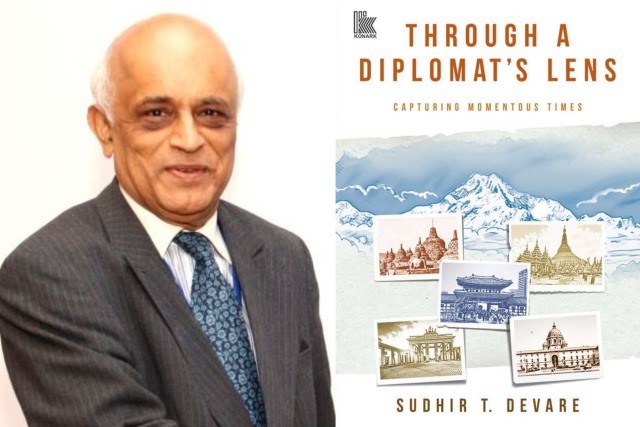
Is Dynastic Politics Dead? BJP Is Nursing Aplenty
Over the past five years, the ruling Bharatiya Janata Party ran a sustained campaign against dynastic politics to discredit Congress president Rahul Gandhi. In the 2014 Lok Sabha poll campaign, Prime Minister Narendra Modi would refer to him with derision as shehzaada (royal scion) while this election was pitched as a battle between “naamdars and kaamdars” to drive home the point that the Congress leader’s only claim to fame was that he belonged to the Nehru-Gandhi family.
And when Rahul Gandhi was defeated in his family stronghold Amethi, a gleeful BJP lost no time in declaring that the verdict proved that the electorate had rejected political dynasties. Former finance minister Arun Jaitley posted a blog on Facebook, saying that the “dynastic character” of the Congress was responsible for the party’s decline while pointing out that the BJP is one of the three “prominent non-dynastic parties in India”. One proverb that immediately comes to one’s mind is: those who live in glass houses…
ALSO READ: Economy Could Be Worse Than Data Shows
There is no doubt that the Congress has, over the years, has become synonymous with dynastic politics but the other political parties are far from free from this phenomenon, the BJP included. A study by Gilles Vernier and Christophe Jaffrelot shows that 30 percent of the new parliamentarians are from political families. The Congress has topped this list but the BJP is not far behind while regional parties have evolved into family enterprises.
As the country’s oldest political party, which has been helmed by four generations of the Nehru- Gandhi family over several decades, the Congress comes in for greater notice and is, therefore, singled out for criticism. And when the dynast fails to deliver, as in the case of Rahul Gandhi, the attack is even sharper as is evident from the tone of Jaitley’s blog post.
The BJP’s dynasts have escaped public attention primarily because they are not in top leadership positions. But this is explained by the fact that the BJP is a relatively younger party and, it started climbing the growth charts in the nineties. The party’s dynasts are still younger and will take time to climb to the top.
ALSO READ: Foreign Policy Challenges Before Govt
In this Lok Sabha, the BJP’s benches will be occupied by long-term MP Maneka Gandhi who won the Sultanpur seat in Uttar Pradesh and her son Varun Gandhi who now represents the Pilibhit constituency earlier held by his mother.
Railway minister Piyush Goyal, whose father was once the BJP treasurer and mother a three-time state legislator, also belongs to the club of political inheritors. Anurag Thakur, the new sports minister, and four-time MP from Hamirpur is the son of former Himachal Pradesh chief minister Prem Kumar Dhumal. Then there is Poonam Mahajan, the daughter of the late BJP leader Pramod Mahajan, who returns to the Lok Sabha for the second time. She is joined by Pritam Munde, daughter of the late Gopinath Munde, who is also into her second term in Parliament.
Dushyant Singh, son of former Rajasthan chief minister Vasundhara Raje, is back in the Lok Sabha, having won the Jhalawar-Baran seat in the desert state. Rita Bahuguna Joshi, daughter of the late veteran Congress leader H.N.Bahuguna is the new dynast in the BJP. She joined the party only a few years ago.
If it is anyone’s argument that this election rejected dynastic politics, they could not be further from the truth. Though it is true that many political heirs like Rahul Gandhi, Jyotiraditya Scindia, Jitin Prasada and Sushmita Dev, have lost, dynasts in both national and regional parties are flourishing. In the Congress Madhya Pradesh chief minister Kamal Nath’s son Nakul Nath was the sole winner from the state, former finance minister P.Chidambaram’s son Karthi Chidambaram’s son has also made it to the Lok Sabha as has Gaurav Gogoi, son of former Assam chief minister Tarun Gogoi. Congress ally Nationalist Congress Party chief Sharad Pawar’s daughter Supriya Sule retained the family fiefdom Baramati, which was first won by her father in 1967. Pawar now sits in the Rajya Sabha.
The big regional winners – Odisha chief minister Naveen Patnaik, DMK’s M.K.Stalin and Jaganmohan Reddy of YSR Congress Party, are all products of political families. Patnaik, who returned as chief minister for a record fifth term, is the son of the late Odisha’s political giant Biju Patnaik, Stalin took over the party after the death of his father, the legendary M.Karunanidhi, and S. Jaganmohan Reddy is the son of former Andhra Pradesh chief minister S.Rajasekhara Reddy.
While Reddy has ousted the Chandrababu Naidu government in Andhra Pradesh, Stalin has swept the Lok Sabha poll in his home state Tamil Nadu while his sister Kanimozhi will be among the party’s representatives in the Lok Sabha.
Then there is the father-son duo, Mulayam Singh Yadav and Akhilesh Yadav of the Samajwadi Party, who will be among the five MPs from their party in this Lok Sabha. The Shiromani Akali Dal will be represented by party president Sukhbir Singh Badal and his wife Harsimrat Kaur, also known as the power couple.
BJP alliance partner Lok Janshakti Party is yet another family-owned shop. While its senior leader Ram Vilas Paswan has moved to the Rajya Sabha, his son Chirag Paswan is back in the Lok Sabha for the second time.
Dynasts argue that it is unfair to criticize them as they have been democratically elected by the people. They also argue that they have earned their spurs, having worked hard to get where they are today.
However, there is no denying that they all have a head start over other political newcomers. With elections becoming an increasingly expensive affair, they have the advantage of having access to their family wealth, which immediately pushes them in a different league. Belonging to a known political family also means their name has an instant recall value. All this inputs into building a political dynasty.



